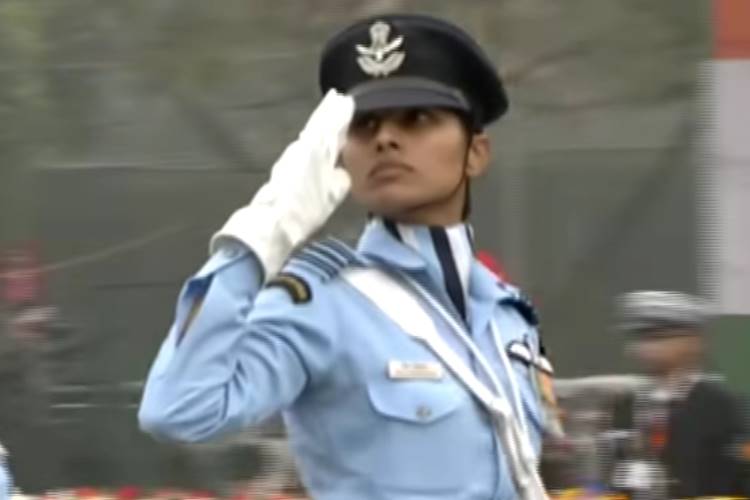
Women in Indian armed forces: No institution can now afford not to be inclusive, as is evident from the government’s recent stance at the Supreme Court that it is not opposed to inducting women into military colleges such as the National Defence Academy. This will be a game changer for the Indian armed forces which employs close to 1.4 million people. Currently, women constitute just 0.56% of the Indian Army’s total strength. For the Navy, this figure is 6.5%, while it is 1.08% in the case of the Air Force.
In July this year, minister of state for defence Ajay Bhatt told the Rajya Sabha that the defence forces are short of 9,712 officers and over 1.09 lakh soldiers, airmen and sailors. The shortage in officer ranks is known and measures are already in place to address it – one of them being the opening of NDA vacancies for women. However, the shortage of soldiers is a serious concern.
The decision to open up NDA for girls, thus increasing its intake will certainly help meet the officer shortage. NDA is the main feeder academy that trains officer cadets of all the three services. NDA graduates are known to excel in their service career and get into senior positions in the three services. The entrance exam for this prestigious academy is conducted in three parts, a written paper by UPSC followed by a 5-day SSB interview and finally a medical examination. With over 5 lakh students appearing in it, the success rate of around 0.1% ensures the quality of cadets who reach the Sudan Block.
READ I Cryptocurrency race: Cautious India may miss the bus
On November 14 2021, 30,00,000 boys and 1,77,000 girls appeared for the written examination for NDA. In February this year, the Supreme Court gave a ruling, allowing girls to compete for NDA. When applications were invited by the UPSC this time, it gave the opportunity to girls to apply for induction into this premier institution.
A peep into Indian contemporary history shows that women took active part in combat alongside men when the situation demanded. India has a tradition of female warriors like Razia Sultan, Rani Laxmi Bai, and Mai Bhago who picked up the sabre to defend their soil. However the British, who ruled India for more than 200 years, did not recruit women in any uniformed force, be it Army, Navy, Airforce or police. However, Netaji Subhash Chandra Bose formed an all-female unit of the Indian National Army, Rani of Jhansi Regiment, with women officers and soldiers.
Women officers in armed forces
After Independence, Indian armed forces started opening their doors for women officers, starting with the medical branches in 1958. From 1992, the government started recruiting women as officers in logistics branches (ASC, AOC, JAG, AEC, and Intelligence Corps) as well as in technical services like EME, followed by technical arms and aviation. Thousands of women applied for the 25 vacancies in the first batch in 1992. The first batch of lady cadets underwent training along with male cadets at OTA Chennai and were commissioned in 1993.
Airforce and Navy also followed suit and received overwhelming responses to the initiative. There was no looking back after that. In 1994, the Indian Airforce started recruiting women pilots in support roles. Two women pilots took part in the Kargil War by flying in the combat zone. In 2015, the IAF inducted women as fighter pilots. An all women crew of six Indian Navy officers took part in Navika Sagar Parikrama aboard the INSV Tarini in 2018. In early 2021, the Indian Navy started deploying women officers on warships too.
READ I Insurtech: Towards the next phase regulatory evolution
Women soldiers in armed forces
India’s armed forces currently have a strength of 1.3 million. They have an authorised strength of 70,000 officers (source: PIB, 2018) and battling the shortfall of 10,000 officers. Presently there are 1,672 women officers (other than AMC and MNS) which is about 3.6% of the present officer cadre. However, representation in soldiers’ ranks is miniscule. The Army started taking women as soldiers in military police in 2020 in limited numbers. In May this year, the first ever batch of 83 women soldiers were inducted into Military Police Corps.
Opening up soldier’s vacancies to women will not only address the existing deficiency, but also give immense opportunity for girls from all strata of society. Even if we go with pro-rata allotment, the vacancies could run into a few thousands every year. Women soldiers are already doing a fabulous job in police, CRPF and other paramilitary forces including ITBP which have deployed women soldiers in high altitude and borders where they have served successfully.
Finally, the decision to open NDA to girls is a welcome step and will contribute towards meeting the officer shortage. Three years of training at NDA which includes graduation as well as physical and mental training will certainly enable women officers to serve in arms as permanent commissioned officers. It will give them the opportunity to reach the ranks of Brigadiers and Generals in the future. In addition to this, it is time the ministry of defence took note of the increasing deficiency at soldiers’ level and open doors to induct women as soldiers, especially in the branches where women officers are already serving.
While male officers do not oppose women joining armed forces, even in combat roles, they feel the move may prove impractical. They cite reasons such as physical fitness limitations, acceptance among soldiers, vulnerability to sexual harassment, and infrastructure limitations. But these limitations must be overcome as institutions like the armed forces cannot afford to not be gender inclusive.
(Dr Mohinder Pal Singh is an Army veteran. He is currently a defence analyst with EGROW Foundation, a Noida-based think tank.)
